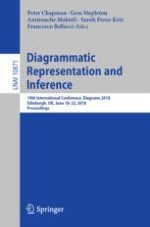
Open Access 2018 | OriginalPaper | Buchkapitel
How Cross-Representational Signaling Affects Learning from Text and Picture: An Eye-Tracking Study
verfasst von : Juliette C. Désiron, Mireille Bétrancourt, Erica de Vries
Erschienen in: Diagrammatic Representation and Inference
Aktivieren Sie unsere intelligente Suche, um passende Fachinhalte oder Patente zu finden.
Wählen Sie Textabschnitte aus um mit Künstlicher Intelligenz passenden Patente zu finden. powered by
Markieren Sie Textabschnitte, um KI-gestützt weitere passende Inhalte zu finden. powered by